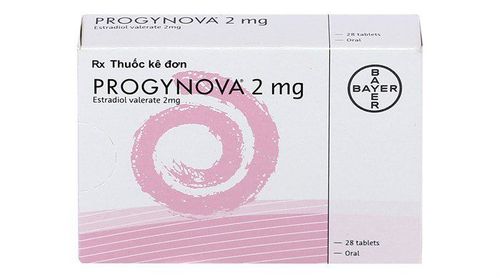The article was professionally consulted by Doctor Specialist I Nguyen Thi Man - Department of Obstetrics and Gynecology - Vinmec Danang International General Hospital. The doctor has over 10 years of experience in diagnosing, consulting, and treating in the field of Obstetrics and Gynecology.
Polyhydramnios is the phenomenon of excess accumulation of amniotic fluid beyond the normal level. Amniotic fluid plays an extremely important role in the development of the fetus, however, excess amniotic fluid can potentially pose some risks and affect the mother and fetus, especially for fetuses at weeks 37-39.
1. What is polyhydramnios?
• Polyhydramnios is a condition of excess amniotic fluid exceeding the normal amniotic index.
• Amniotic fluid is the environment surrounding the fetus, protecting the fetus from all collisions and infections from the outside environment. The fetus swallows amniotic fluid, excretes it through the urinary tract, and in this way controls the amount of amniotic fluid around it. Amniotic fluid is also the environment that helps the fetus' lungs develop.
• The amount of this fluid will gradually increase until there is about 1 liter in the 37th week. After that, the amount of amniotic fluid usually decreases to about 0.5 liters at the 40th week of pregnancy. Your baby will often swallow amniotic fluid, and then pass it out of the body in the form of urine. This is the body's way of controlling the amount of amniotic fluid around the fetus. Once this balance is disturbed, the volume of amniotic fluid can increase rapidly, making the mother feel heavy and uncomfortable.
• To diagnose polyhydramnios, the doctor will perform an ultrasound and get an indirect estimate of the volume of amniotic fluid. The mother is diagnosed with polyhydramnios when the amniotic fluid index (A.F.I) by ultrasound is over 25cm.
2. Signs and Symptoms of Polyhydramnios in Pregnant Women
Mild polyhydramnios is often asymptomatic, but each woman may experience different signs. Symptoms may include:
• The mother’s abdomen appears larger than expected for the gestational age, making it difficult to hear the fetal heartbeat.
• An abdominal circumference (measured through the navel) exceeding 100 cm, accompanied by a shiny abdomen, abdominal pain, shortness of breath, indigestion, and difficulty breathing.

- The development of dilated veins can lead to hemorrhoids during pregnancy.
3. Consequences of polyhydramnios
3.1. Is It Okay to Have Excess Amniotic Fluid at 38 Weeks of Pregnancy?
The risks associated with polyhydramnios increase depending on when it occurs during pregnancy and the volume of amniotic fluid present. At 38 weeks, polyhydramnios can lead to:
• Premature rupture of membranes due to excessive fluid in the uterus.
• Abnormal fetal positions, such as breech birth.
• Placental abruption.
• Umbilical cord prolapse.
• Restricted fetal growth and potential skeletal development issues.
• To ensure safety, a cesarean section may be necessary, which carries more risks than a vaginal birth and a higher chance of postpartum infections.
• Does Polyhydramnios Affect the Fetus? Polyhydramnios can increase the risk of premature birth. Premature infants often have incomplete organ development, and mothers might be given steroids to help mature the baby's lungs.
• Polyhydramnios also raises the risk of postpartum hemorrhage because the excessive amniotic fluid prevents the uterus from contracting effectively.
• The most severe risk for the fetus associated with polyhydramnios is stillbirth, which is the worst-case scenario.
3.2. How to Treat Polyhydramnios at 37-39 Weeks?
Outpatient Treatment:
• For pregnancies under 34 weeks: Re-evaluate every 2 weeks, measure the cervical canal length, and consider pulmonary support medications.
• For pregnancies at or beyond 34 weeks: Schedule regular evaluations or earlier appointments if abnormal symptoms arise, conduct color Doppler ultrasound, and perform non-stress tests weekly.
Admission Criteria:
• Signs of maternal overload (difficulty breathing, abdominal pain, tachycardia).
• Signs of threatened premature birth (abdominal pain, bleeding).
• Polyhydramnios at 39 weeks or more.
• CTG group II or higher or abnormal color Doppler ultrasound results.
Address the underlying cause (if identifiable).
Manage symptoms effectively.
• Reduce amniotic fluid levels by aspirating some of the fluid, especially if the mother exhibits signs of overload (such as difficulty breathing, tachycardia, or abdominal pain). This procedure should be done at a rate of less than 1 liter every 20 minutes and may be repeated depending on the reabsorption rate of amniotic fluid.

Indications for Termination of Pregnancy:
• Mild to moderate polyhydramnios with a normal non-stress test at 39 weeks or more.
• Severe polyhydramnios at 37 weeks or more.
• Severe maternal overload symptoms in pregnancies between 34-37 weeks, with fetal lung support.
Vinmec International General Hospital provides a comprehensive maternity care program for expectant mothers, starting from early pregnancy. The program includes thorough prenatal check-ups, periodic 3D and 4D ultrasounds, and routine tests aimed at ensuring the health of both mother and fetus. Pregnant women will receive consultations and exams conducted by experienced and specialized obstetricians, helping them gain valuable knowledge to protect their health during pregnancy and minimize complications for both mother and child.
To arrange an appointment, please call HOTLINE or make your reservation directly HERE. You may also download the MyVinmec app to schedule appointments faster and manage your reservations more conveniently.
To arrange an appointment, please call HOTLINE or make your reservation directly HERE. You may also download the MyVinmec app to schedule appointments faster and manage your reservations more conveniently.









